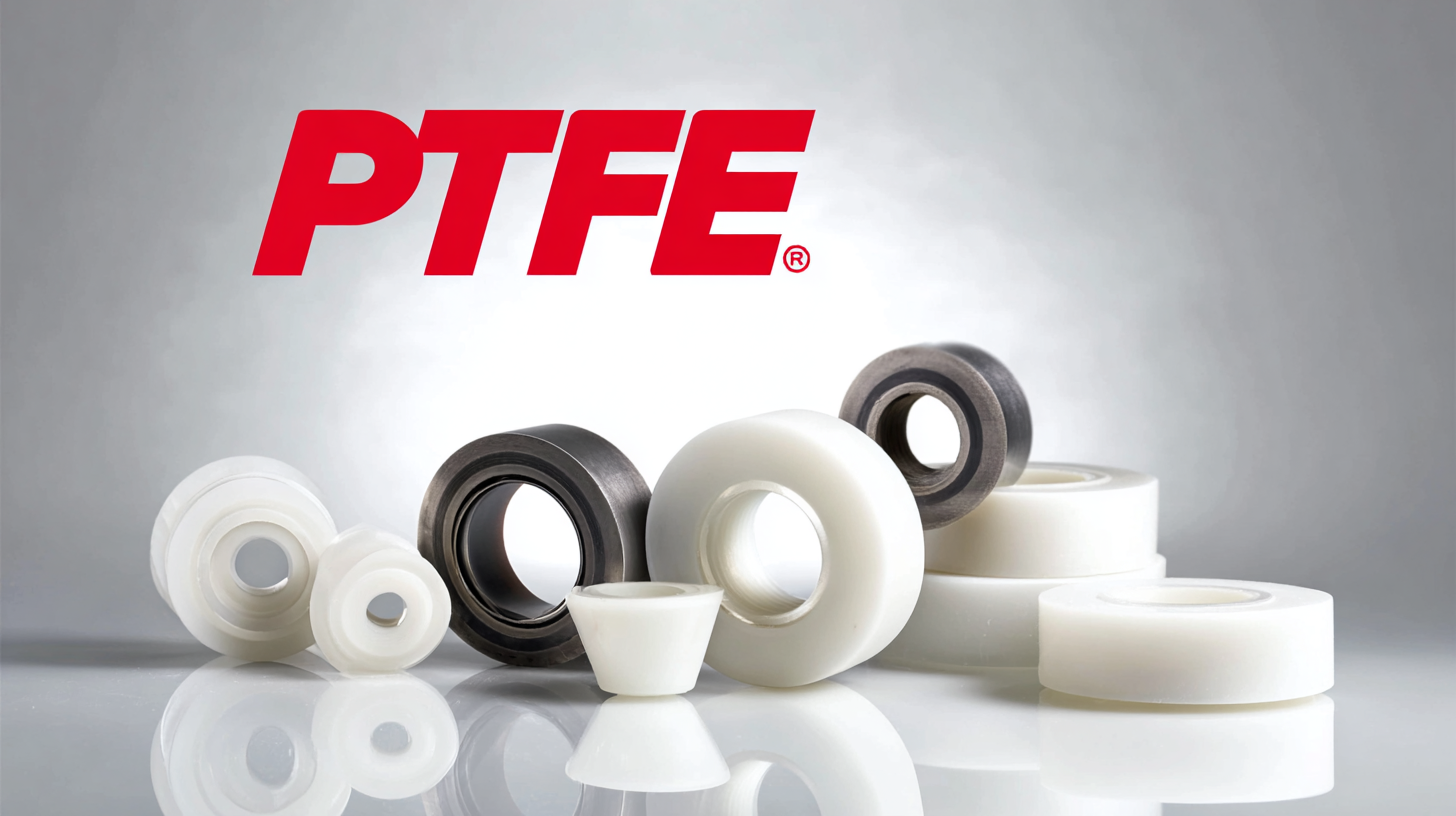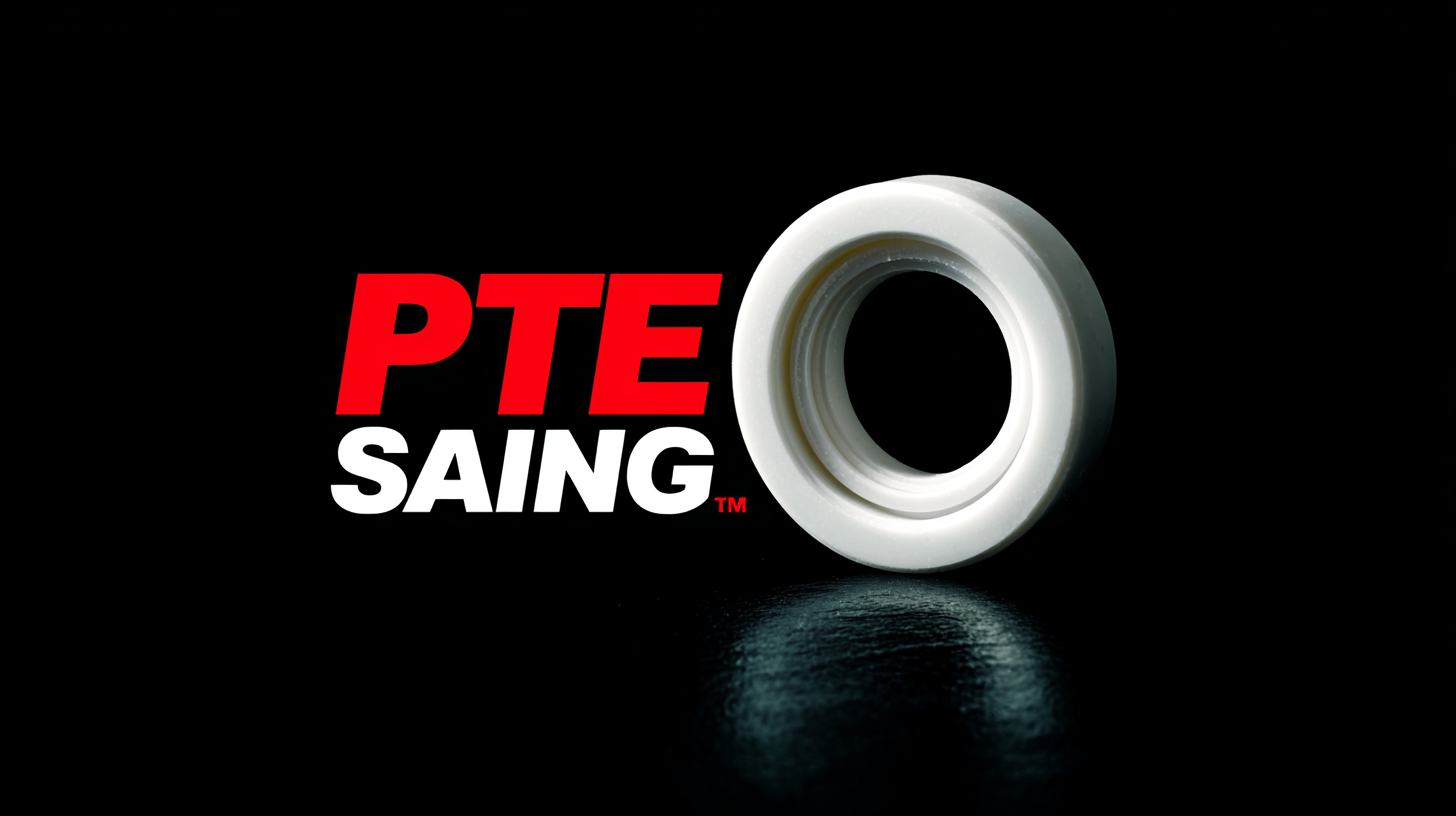As industries move towards increased efficiency and sustainability by 2025, the importance of selecting the right sealing solutions has never been more critical. PTFE sealing gaskets, known for their exceptional chemical resistance and high-temperature stability, have emerged as a pivotal component across various sectors, including automotive, aerospace, and oil & gas. According to a recent report by Markets and Markets, the global gasket market is projected to reach USD 17.1 billion by 2026, driven by the rising demand for advanced sealing materials. In light of these advancements, this ultimate guide will delve into the factors influencing the choice of PTFE sealing gaskets, ensuring your industry meets both regulatory standards and operational efficiency in this rapidly evolving landscape.

When selecting PTFE sealing gaskets for your industrial applications, several key considerations must be taken into account. First and foremost, understanding the specific requirements of your application is critical. This includes factors such as the type of media being sealed (liquids, gases, or solids), the temperature and pressure conditions, and the chemical compatibility of the gasket material with the media. PTFE, known for its exceptional chemical resistance and thermal stability, is often a preferred choice, but ensuring it matches your operational conditions is essential for optimal performance.
Another important consideration is the gasket design and dimensions. The physical properties, such as thickness, hardness, and surface finish, can significantly affect the sealing performance. A properly designed gasket will ensure a reliable seal that can accommodate thermal expansion or contraction and prevent leakage. Additionally, the installation method and equipment compatibility should not be overlooked. Adopting standardized dimensions and configuration ensures easier replacements and maintenance, ultimately enhancing the longevity and reliability of your sealing solutions in demanding industrial environments.
When selecting a PTFE sealing gasket for your industry needs, understanding temperature and pressure ratings is crucial. These ratings determine the gasket's ability to maintain a proper seal under varying conditions, which directly impacts system efficiency and safety. PTFE gaskets are known for their excellent chemical resistance and high-temperature performance, making them suitable for many applications. However, exceeding the recommended limits can lead to gasket failure, resulting in leaks and costly downtime.
Tips: Always check the manufacturer's specifications for the maximum and minimum temperature and pressure ratings. Ensure that the selected gasket aligns with the operating conditions of your equipment. It's beneficial to conduct regular maintenance checks to monitor gasket integrity, as prolonged exposure to extreme conditions can degrade materials over time.
Moreover, consider the characteristics of the substances being sealed. Different chemicals can interact with PTFE in unexpected ways, so it’s wise to consult compatibility charts. Understanding the environment in which the gasket will operate—such as the presence of abrasive particles or fluctuating temperatures—can help in making an informed decision that enhances performance durability and safety.
PTFE sealing gaskets are indispensable in various industries due to their outstanding chemical resistance and thermal stability. According to a report by Grand View Research, the global PTFE gasket market is expected to witness a compound annual growth rate (CAGR) of 4.9% from 2021 to 2028. This growth is primarily driven by the increasing demand in the chemical processing industry, where PTFE’s ability to resist a wide range of corrosive substances makes it a top choice for sealing applications.
In the pharmaceutical sector, which is projected to reach a market value of $1.3 trillion by 2026 according to Fortune Business Insights, PTFE gaskets are essential for maintaining sterility and preventing contamination during manufacturing processes. Their ability to withstand high temperatures and pressure further ensures the integrity of pharmaceutical products. Similarly, the oil and gas industry relies on PTFE sealing solutions to ensure safe and efficient operations, with a projected market growth of about 3.2% over the next few years as noted in a recent industry analysis. This highlights the critical role PTFE gaskets play in enhancing operational safety and product reliability across these key sectors.
When selecting PTFE sealing gaskets, evaluating chemical compatibility is paramount for ensuring optimal performance in your specific application. A study by the American Society for Testing and Materials (ASTM) highlights that PTFE can withstand a broad range of chemical exposures, making it suitable for industries such as pharmaceuticals, chemicals, and food processing. However, not all PTFE gaskets are created equal; different formulations may exhibit varying degrees of resistance to specific chemicals.
For instance, PTFE's exceptional resistance to strong acids and bases is well-documented, but compatibility with certain solvents or aggressive chemicals, such as strong oxidizers, can be problematic. According to a report by the International Sealing Distributors Association (ISD), over 70% of gasket failures in chemical applications are attributed to inadequate compatibility assessments. Therefore, it's crucial to consult manufacturer data sheets and conduct compatibility testing when necessary, to confirm that the selected PTFE gasket can handle the operational environment without degrading or failing prematurely. Understanding the nuances of chemical interactions is vital for maintaining system integrity and prolonging the service life of your sealing solutions.

When it comes to maintaining the efficiency and longevity of PTFE sealing gaskets, implementing best practices is essential. One key aspect is regularly inspecting the gaskets for signs of wear or damage. This proactive approach helps identify issues before they escalate, ensuring that your equipment operates smoothly. In addition, clean the gasket surfaces with a suitable solvent to remove any contaminants that could compromise the seal. This simple yet effective practice can significantly enhance the gasket’s performance.

Another important maintenance best practice is to ensure proper installation and torquing of the gaskets. Over-tightening can lead to deformation, while under-tightening might result in leaks. Following the manufacturer’s specifications can prevent these issues and prolong the life of PTFE gaskets. Additionally, it’s wise to keep track of the operating conditions, including temperature and pressure variations. By monitoring these factors, you can make informed decisions on when to replace or adjust the gaskets, ultimately extending their effective lifespan and minimizing downtime in your operations.
